Certains champs sont invalides
- {{validation.errorMessage}}
Votre message a été envoyé avec succès.
Avant le début du congrès, plusieurs cours intensifs hautement spécialisés vous seront offerts par des experts. Ces cours approfondis permettront aux professionnels de suivre l'évolution des techniques les plus récentes dans chaque domaine d’expertise. Consultez régulièrement le site web afin d’obtenir les informations à jour, dont la disponibilité des cours. Les places pour ces derniers sont limitées et seront offertes sur une base du premier arrivé, premier servi.
L'inscription aux cours intensifs est maintenant ouverte!
Veuillez noter que les cours intensifs seront dispensés en anglais et que, par conséquent, les textes ci-dessous ne seront disponibles qu'en anglais.
Mercredi le 28 avril et jeudi le 29 avril
Glencore Technology has been investing in driving innovative industry improvements in the minerals processing space for over 35 years. The fine grinding IsaMill and highly efficient Jameson Cell technologies have been the cornerstone of our success. Both technologies have undergone significant change and improvements which now places us in a unique position to help influence and drive a more sustainable and profitable future.
Hosted by Glencore Technology, this workshop delves into the fundamentals that make these technologies so unique and also explores the latest developments that we believe will strongly influence decision making on future concentrator designs. We will describe the process we undergo when sizing equipment selections and what considerations are important.
Our goal for attendees is to come away with a strong understanding of our technologies regarding fundamentals, design and future opportunities.
The course outline includes:
Objective
To help promote new technology to reduce footprint, save water, improve recovery.
Target audience
Mining, Mineral Processors, Operations, Engineering Companies, Consultants.
Facilitators:
 |
Glenn Stieper – Mineral Processing Manager Glenn Stieper is the manager for the mineral processing team at Glencore Technology. Glenn has over 20 years working in engineering projects and design, laboratory testing and operations across most commodities. Glenn holds an Executive MBA and Postgraduate certificate in Extractive Metallurgy. |
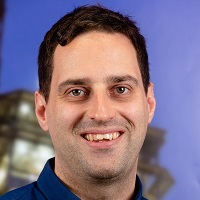 |
Ion Gurnett – Senior Metallurgist Ion Gurnett is currently working in the mineral processing team at Glencore Technology with a focus on the IsaMill ™ Technology. He has worked both, Operations and Project roles within the mineral processing industry for 10 years in both Australia (Mount Isa Mines) and North America (Red Dog Mine). |
 |
Adam Price – Senior Processing Engineer Adam Price is currently the Senior Processing Engineer at Glencore Technology focusing on the Jameson Cell Technology. He has worked in Operations within the mineral processing industry for 10 years at Glencore’s Mount Isa Mines and McArthur River Mine before transferring to Glencore Technology in 2018. |
Length: 8 hours
Date and time: April 28 - 2pm to 6pm ET & April 29 - 2pm to 6pm ET
Cost: Free
S'inscrire
| Fièrement commandité par: | 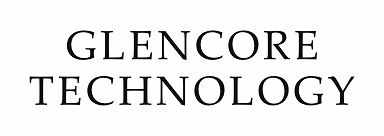 |
Mercredi le 28 avril
This course is an introduction to mining and mineral processing. Basics concepts will be presented along with many pictures, videos, and anecdotes so that the participants will have a better understanding of public information provided by exploration and mining companies. The course content includes:
Objective
By the end of the course, the participants will have basics knowledge of:
Target audience
This course is designed for people working in sales, HR, accounting, law, investment, and government who deal with geologist and engineers and need to understand the work they do. The knowledge gained here will help you ask the right questions when dealing with technical people.
Facilitators:
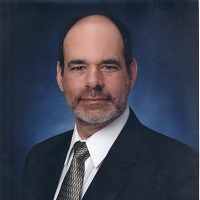 |
George McIsaac is a mining engineer and a mineral economist focused on orebody assessment. He has 35 years’ experience in industry, consulting, research and development, and teaching. He specializes in project economics, combining design, planning, and cash flow estimation, to guide mining executives. |
Length: 6 hours
Date and time: April 28 - 9:00am to 12pm & 1pm to 4pm ET
Cost:
| CIMVTL21 attendee | $239 |
| CIM Member | $299 |
| Non-member | $499 |
| Student | $149 |
S'inscrire
Jeudi le 29 avril
Canadian mining companies operating in developing countries often find themselves between "a rock and a hard place" when it comes to bribery and corruption. Under Canada's Corruption of Foreign Public Officials Act, it an offence to: offer any form of advantage or benefit to a foreign public official to obtain an advantage in the course of business or to engage in certain accounting practices which are employed for the purpose of bribing a foreign public official or concealing a bribe. Yet in many countries in Africa, Asia and elsewhere, corruption is a necessary cost of doing business.
This course comprises a 1-1/2 hour lecture (including Q and A) on Corruption - its causes, costs and consequences. It includes both theory and practical elements and considers the '10 disconnects' discussed in the CIM Magazine article ("Between a Rock and a Hard Place, May 16, 2017) and presents some of the strategies that are being used by companies worldwide to ensure compliance with anti-corruption laws.
An additional (optional) 1-1/2 hour session builds on the first and allows for the discussion of one or more fictional case studies on mining and corruption.
Objective
To present some of the major issues relating to the demand side of corruption (i.e. foreign officials asking for bribes) and the supply side of corruption (companies paying bribes). To review some strategies companies can adopt to ensure they are compliant with Canada's Corruption of Foreign Public Officials Act.
Target audience
Middle and senior level managers in junior and integrated mining companies
Facilitators:
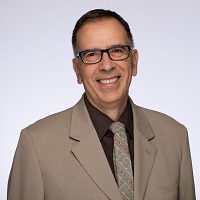 |
Rick Stapenhurst is an Assistant Professor at the School of Continuing Studies, McGill University, where he oversees the Professional Development training Programs for both MPs and for Parliamentary Staff and leads the university’s parliamentary research program. Previously, he was Director of Parliamentary Programs in the Governance and Anti-Corruption unit at the World Bank Institute.
He has written extensively on issues related to financial oversight and parliamentary strengthening; his most recent books include “Anti-Corruption Evidence: The Role of Parliaments in Curbing Corruption,” and “Beyond Westminster: A Global Perspective on Public Governance and Accounts.” He is currently leading a multi-disciplinary research team examining the demand and supply sides of corruption in the extractives industries. He has written numerous articles and working papers that have been published in both the business and peer-reviewed academic journals. |
Length: 1 ½ to 3 hours
Date and time: April 29 – 9am to 12pm ET
Cost:
| CIMVTL21 attendee | $119 |
| CIM Member | $149 |
| Non-member | $299 |
| Student | $49 |
S'inscrire
Mercredi le 12 mai
The panel will lead an interactive learning session discussing sustainability in mining from an economic viewpoint.
There will be a focus on the economics of pre-concentration, and how to set up trade off analysis between grade, recovery, and ore rejection, and why with fundamental depletion being the biggest issue our industry faces, recovery is king.
The session will lightly touch on some of the topics covered in sustainability economics from the BRIMM Executive Micro-Certificate in Economic Leadership for Mining.
Objective
Target audience
The course is suitable for any person working in the mining industry who is interested in sustainability and particularly in using economics to build a more sustainable industry.
Some of the key goals of BRIMM Executive Micro-Certificate program are to promote diversity, inclusiveness, and breakdown traditional silos in the mining industry. We welcome everyone!
Facilitators:
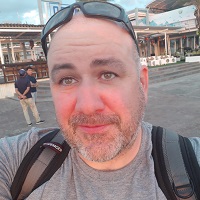 |
Ben Murphy Ben, not to be mistaken for Benjamin, is a metallurgist / mineral processor. The first part of his career was spent working at different mine sites around the world. This was where he developed his love of bubbles. He then flipped to the ‘dark side’ of equipment sales and has worked for several OEMs both in his native Australia and in the Americas. It was during this time he started thinking about how equipment used in processing plants and how paradigms around the equipment often hold the industry back. He also started working with Benjamin and focusing on how to unlock value in mining operations. Currently he works for FLSmidth looking after a large copper miner and several gold miners along with shepherding FLSmidth’s efforts in the gold space. He lives in Denver Colorado with his wife and three small, but particularly loud, children. |
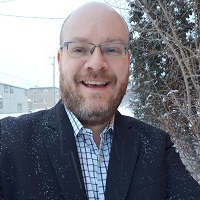 |
Benjamin Cox Benjamin, not Ben, the taller but skinnier non-beer drinking part of B^2, is a medieval historian who got lost while studying the economic causes of the black death and ended up dealing with the economics around mineral processing. On the way, he has detoured and put together Oreninc (which tracked all junior financing for five years), Aston Bay Holdings, which did a deal with BHP on its copper project. Plus, Benjamin has the dubious distinction of working for a hedge fund during the last financial crisis. He has five kids, one dog, one wife, and knows how to swing a hammer when he is broke (which due to the detour to the mining industry with a large family seems to happen way too frequently). He is also writing a Ph.D. on water economics in mining. He can be paid with dark chocolate if you need a favor. |
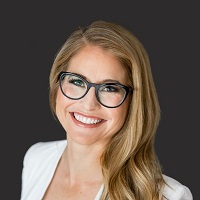 |
Erin Bobicki Erin, not a Ben (although her brother is a Ben who works for BHP), is a metallurgist/mineral processor turned professor who knows nothing about economics. As an undergrad in Environmental Engineering, she told her professor she would NEVER work in mining, but then her first real job was at Vale. After a few years in industrial R&D and operations, she returned to school to do a PhD on carbon storage in mine tailings. She then worked in the semi-conductor industry for a few years, learning how fast innovation can happen, before “slowing down” to work in academia, first in Toronto, and now in Alberta. Sustainability is at the heart of everything she does, whether it is microwaving rocks or handwashing diapers on vacation. She has five kids, two Iceland sheepdogs, and has just started a hydrogen company with a few friends. |
Length: 2 hours
Date and time: May 12 – 2pm to 4pm EDT
Cost:
| CIMVTL21 attendee | $119 |
| CIM Member | $149 |
| Non-member | $299 |
| Student | $49 |
S'inscrire
Inscrivez-vous au plus tard le 8 avril afin de profiter des tarifs d'inscription hâtive!